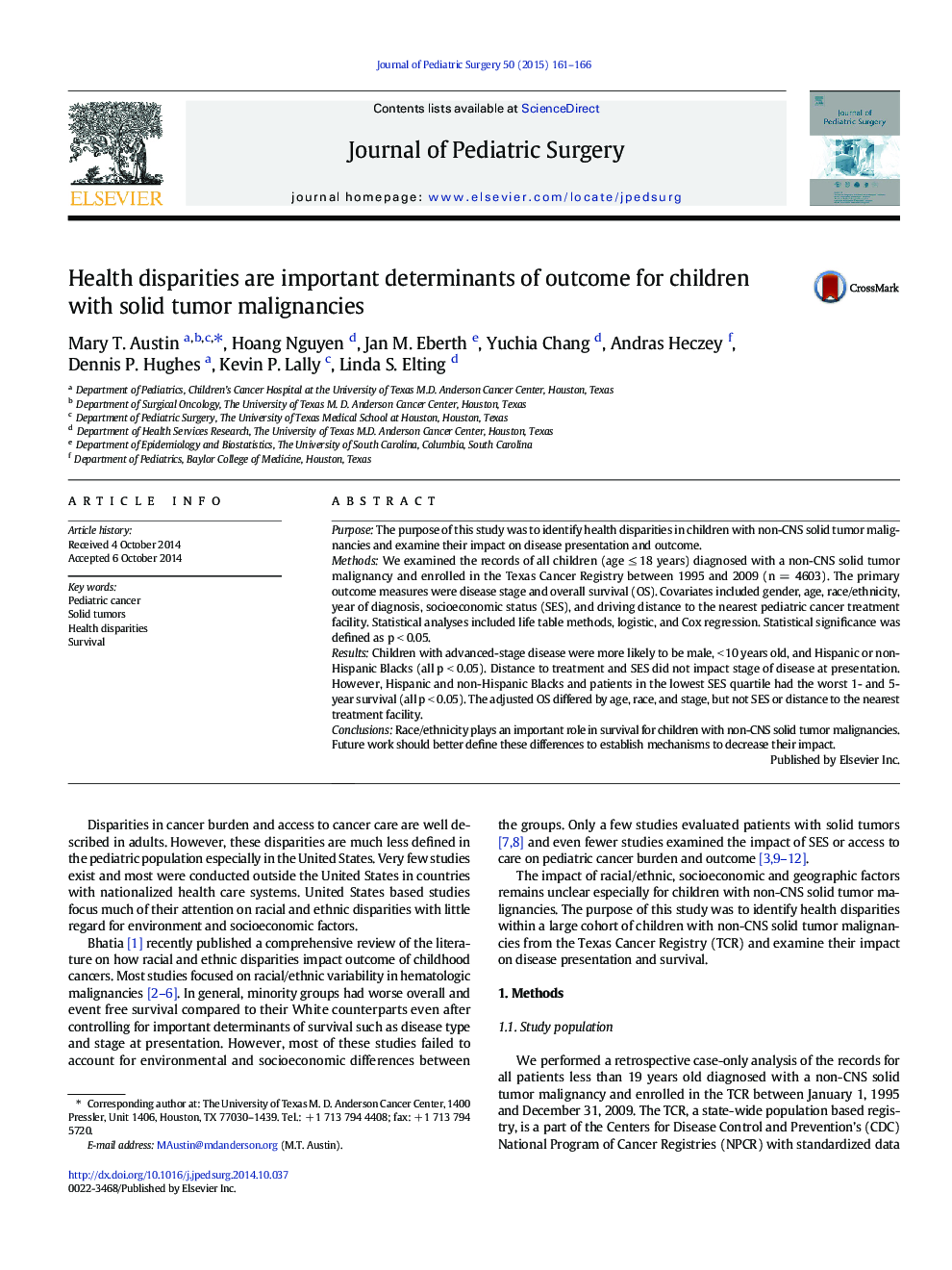| Article ID | Journal | Published Year | Pages | File Type |
|---|---|---|---|---|
| 4155223 | Journal of Pediatric Surgery | 2015 | 6 Pages |
PurposeThe purpose of this study was to identify health disparities in children with non-CNS solid tumor malignancies and examine their impact on disease presentation and outcome.MethodsWe examined the records of all children (age ≤ 18 years) diagnosed with a non-CNS solid tumor malignancy and enrolled in the Texas Cancer Registry between 1995 and 2009 (n = 4603). The primary outcome measures were disease stage and overall survival (OS). Covariates included gender, age, race/ethnicity, year of diagnosis, socioeconomic status (SES), and driving distance to the nearest pediatric cancer treatment facility. Statistical analyses included life table methods, logistic, and Cox regression. Statistical significance was defined as p < 0.05.ResultsChildren with advanced-stage disease were more likely to be male, < 10 years old, and Hispanic or non-Hispanic Blacks (all p < 0.05). Distance to treatment and SES did not impact stage of disease at presentation. However, Hispanic and non-Hispanic Blacks and patients in the lowest SES quartile had the worst 1- and 5-year survival (all p < 0.05). The adjusted OS differed by age, race, and stage, but not SES or distance to the nearest treatment facility.ConclusionsRace/ethnicity plays an important role in survival for children with non-CNS solid tumor malignancies. Future work should better define these differences to establish mechanisms to decrease their impact.
